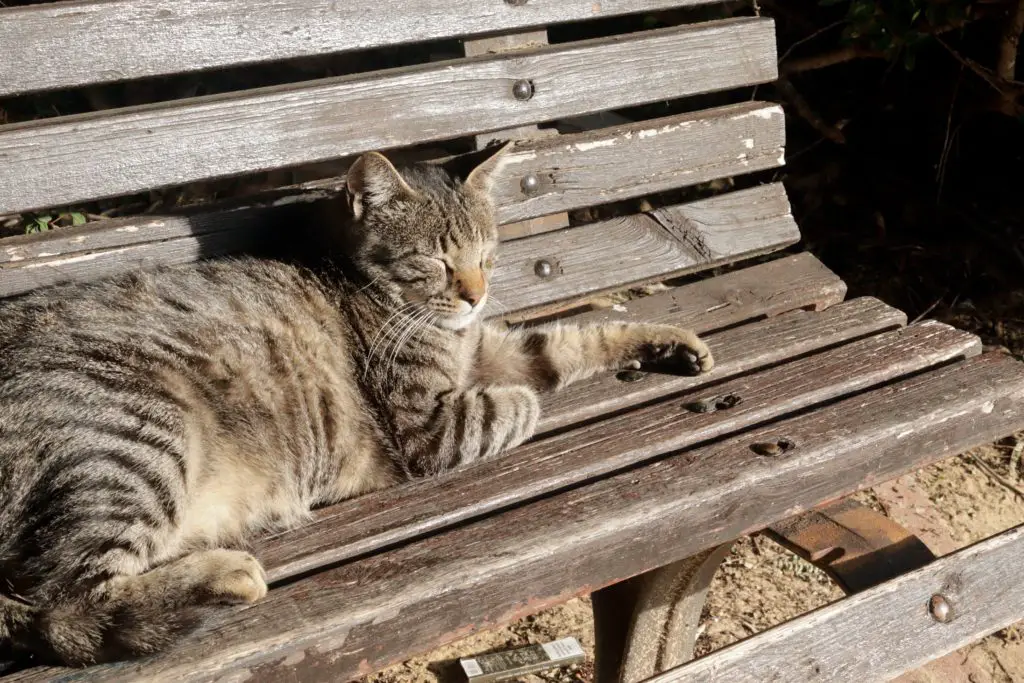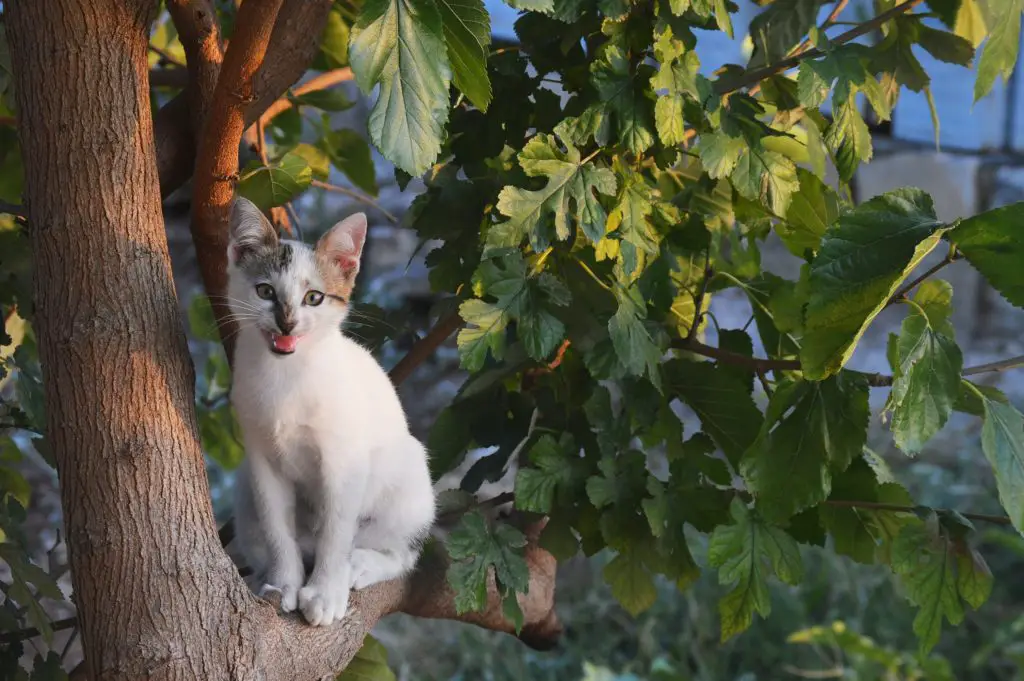If you have seen a cat wandering around outdoors, you might be wondering if it is a feral cat, a stray, or a lost house pet. Being able to determine the type of cat can allow you to better help the animal.
Feral cats can be identified by their behavior which includes avoiding human contact, slinking close to the ground, and staying hidden during the daytime.
This article will explore feral cat behavior and explain how best to help these animals. Check out the list of the best organic cat treats on Amazon now!
What is Feral Cat Behavior?
Feral cats exhibit behavior that is much different than a pet cat or a stray. Since feral cats have gone a long time without human contact–often their whole lives–they do not trust people.
Cats that are unaccustomed to humans will view them as a threat. Feral cats tend to stay hidden during the daytime when people are out and about. During the night, feral cats will come out to seek food in areas away from houses and people.
Feral cats often live in colonies or groups of other cats. The majority of feral cats are not spayed or neutered which leads to many litters of feral kittens. They can usually be found in or around abandoned buildings or other locations without people nearby.
If a feral cat is approached by a human, it will usually try to run away or hide. Feral cats can be aggressive and attack if cornered.
How to Tell if a Cat is Feral or Lost?
While it can sometimes be difficult to know whether or not a cat is feral, there are some signs that you can look for. Feral cats tend to show much different behavior than a cat who is just lost.
First, if you come across a cat in a residential area, near houses or vehicles, it is most likely lost. Feral cats will avoid humans and this includes their homes, porches, and yards.
Another way to tell if a cat is feral or lost is by its response to you. If you approach a feral cat, it will try to get away from you, either by running or hiding. A lost cat is more likely to let you come close to it, even if it is a bit hesitant.
Lost cats can often be tempted with food, whereas feral cats will rarely come near a human to be fed.
What is the Difference Between a Feral Cat and a Stray?
A stray cat is one who used to live in a home with people, but either got lost or was abandoned by its owners. A feral cat on the other hand is one that has usually never had contact with humans.
Stray cats will generally stay in residential areas, sleeping under porches or vehicles. Feral cats will seek out shelter that is far from humans in isolated areas or empty buildings.
A stray cat can remember being around humans and they are still used to human touch and smell. Feral cats have not spent time with people and have no reason to trust them. They are often compared to wild animals like raccoons or foxes.
A stray cat often displays behavior similar to a pet cat, whereas a feral cat looks different. Feral cats tend to crawl close to the ground and avoid eye contact with humans. Feral cats will not meow or purr when humans are nearby, while a stray cat will.
How Long Before a Cat Becomes Feral?
The vast majority of feral cats have never had any human contact. When a feral cat has a litter of kittens, those kittens are raised without being around people. The kittens do not get socialized to humans and become feral themselves.
After a kitten is about eight weeks old, if they have not had any contact with people, they are considered feral.
Cats who were once house pets don’t typically become feral. As long as they had human contact at some point in their life, they are unlikely to exhibit feral behavior even if they are lost or abandoned.
It is possible that after several years of being away from humans, a former house cat will start to show elements associated with feral cats. However, the vast majority of strays are able to be rehomed.
Can a Feral Cat Become a House Pet?
Attempts to socialize feral cats and make them house pets are almost always unsuccessful. Feral cats have not had human contact during the formative part of their life–as kittens. Without this human interaction early in life, it becomes very challenging to socialize them.
Feral cats see people as threats and will avoid them as much as possible. They are unlikely to even take food from people unless it is left out for them in a location away from humans.
As they have also spent their lives outdoors, for the most part, feral cats will not want to live inside. It would be like bringing a raccoon or a badger into your home and trying to domesticate it.
Kittens who are under 8 weeks old can sometimes be homed. The younger the kitten is, the more likely they will have a successful transition to becoming a house pet.
Related Post: 9 Best Bedding Materials For An Outdoor Cat House/Shelter
Tips on Helping a Feral Cat
One of the best ways to help feral cats is to volunteer with an organization that is already working with them. These groups tend to be well-informed about feral cats and already have programs in place to help them.
Many organizations run a trap-neuter-return program. Feral cats are sprayed or neutered and then returned to their original location. Spaying and neutering not only reduces the amount of feral cats, but it also reduces health risks and can help cats gain weight.
Also, consider making a donation to a group that works with feral cats. This money is used to cover the cost of spaying and neutering programs. Funds may also be spent on providing food for the cats and other medical care.

My name is Katie, and I have had different pets at home for as long as I can remember. While I can definitely say I love all animals in general, my heart belongs to cats and dogs. I know you are supposed to choose one or the other, but I could never really decide. I’ve also owned hamsters and fish when I was a kid, and they filled my childhood with very delightful memories.





